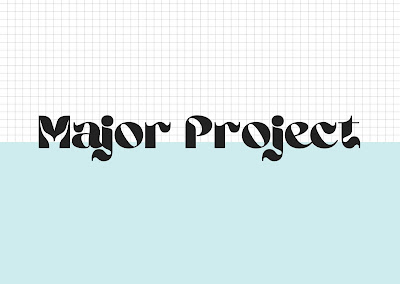Design Research Methodology: Research Implementation
17.05.2021 - 20.06.2021 (Week #9 - Week #12)
Seerat Tayyab Mukhtar Qureshi - 0345576 (BDCM)
Design Research Methodology
Primary Research Implementation
1. Lectures:
We were introduced to our assignment and the details of our assignments. We had to pick 2 methods of primary research and present them to Dr. Jinchi.
2. Instructions:
Module Information Booklet
3. Research Implementation
Fig 1: Final submission
4. Feedback:
Week #9: Dr. Jinchi said my work was good so far. She mentioned that when I include this in my dissertation, I need to make sure I write the pros and cons in paragraphs and rephrase them as strengths and weaknesses to make it more formal. She also said that the next step for me is to was to go into more detail about my interview protocol and questionnaires. I need to plan in detail what images I am going to use and why and also what questions I am going to ask and why. Dr Jinchi said it's important to justify my choice and to avoid any biases, I should pick out various types of images, not just from the Vietnam War. I also need to decide who I am going to interview and why.
Week #10: Dr Jinchi gave me feedback on my questionnaire and interview protocol. I need to be a bit more clear in my objectives for my research and make sure my questions are not set up in a way to receive one-word answers. Rather I should phrase them to extract as much information as possible from the interviewee. The questionnaire also needed some clarity in terms of structure. Adding images to show the audience examples is something I should do because the audience may not understand what I mean by "digestible graphic design" or "visual aesthetics". I also needed to work on my email template as I did not follow the guideline given and should send a follow-up email to clarify. Overall, I need to work more closely with my research objectives to have successful and meaningful research.
Week #11: This week I showed Dr Jinchi my revised interview protocol and targeted audience. She said it was good and much better than before since I was more clear and organized. Some questions however still lacked some clarity as they were a bit confusing to understand. The invite template was good too and Dr Jinchi said I could use the slightly casual modified version since I was approaching on Instagram initially. My next steps are to reach out to my identified people and get the interview done
Week #12: I showed Dr Jinchi the results of my questionnaire and my analysis of the data. She said it was good and I only need to make minor changes to the format to ease readability. I also showed her the results of my interview and the analysis. She advised me to take a closer look at the interview answer and to write an analysis that is more encompassing than my current one which is a bit short.
5. Reflection:
Week #9: I'm looking forward to conducting my primary research because I look forward to getting to know all the different perspectives people have on this topic. I'm interested to see whether people share my opinions on how digestible content is a bad example of graphic design and doesn't convey the message properly.
Week #10: After Dr Jinchi's feedback I did start to see all the holes in my research objectives. My interview questions were not very clear and they aren't going to yield functional or useful results. I'm feeling a bit anxious for the future of my research and whether these interviews will be successful at all.
Week #11: After receiving positive feedback from Dr Jinchi on my revised interview protocol I feel a lot less anxious than last week. I feel like my interviews will actually yield useful results now as I am clearer on what I want from my primary research. The problem was that my interview protocol was not based on my research objectives and hence was not correlating well with my research. I am glad I got my research back on track.
Week #12: I think my research went well because my perspective on this topic has widened a lot. I have realised that I was looking at my research problem from a one sided perspective. The interviews especially increased my understanding so much since it came from both an activist and graphic designer's perspective. I look foaward to looking deeper into this project when I'm going to write my disseratation next semester.



Comments
Post a Comment